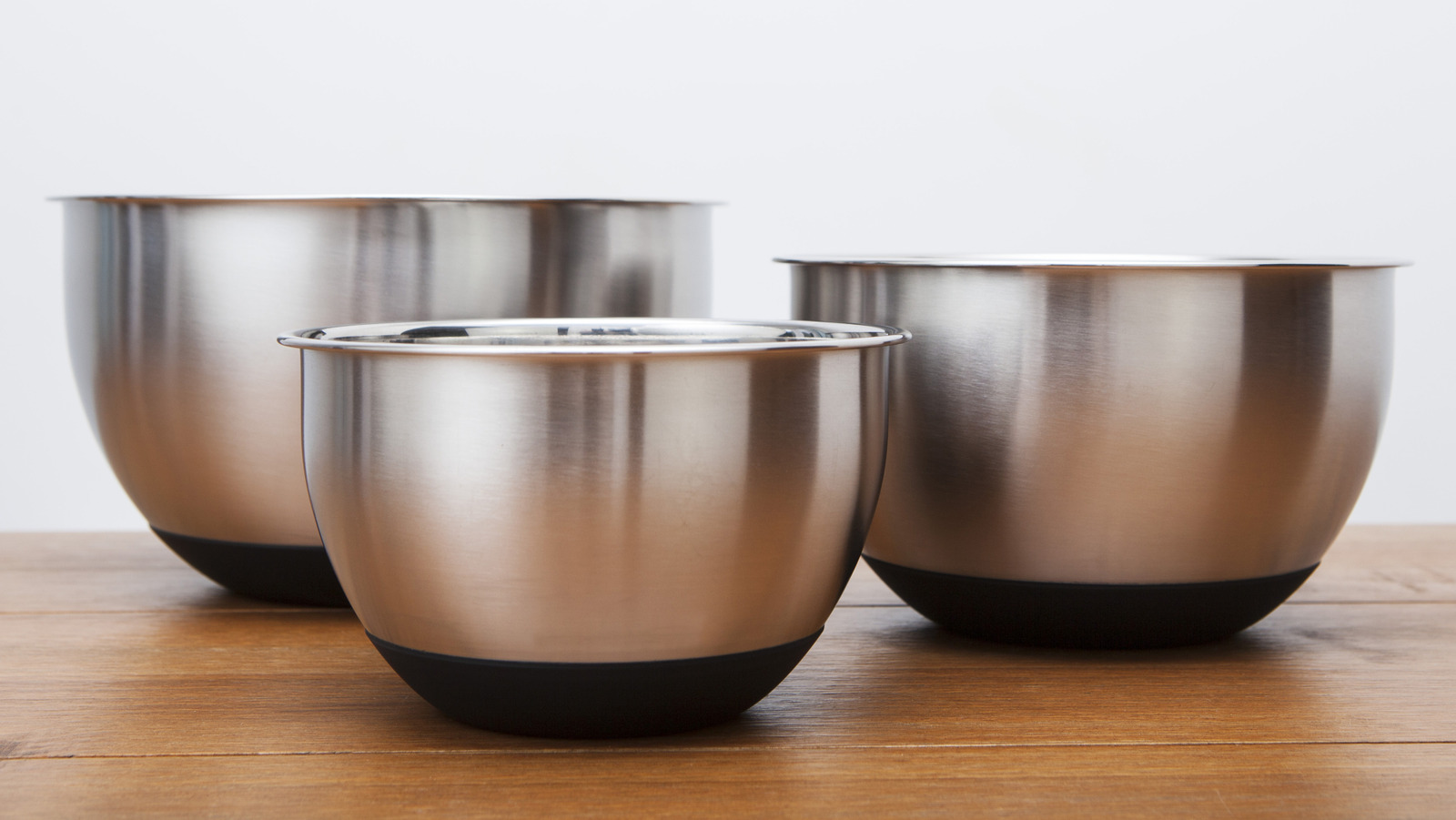
"Let's talk about what aluminum actually does when it meets acid. Vinegar, citrus, tomatoes - any acidic ingredient triggers a reaction that dissolves trace amounts of metal into your food. If you've ever wondered why your lemon vinaigrette tastes vaguely off, or why that tomato sauce you've just mixed has a greyish tint, now you know the culprit. And yes, you've been eating trace aluminum all this time, though the CDC notes it's generally harmless"
"These kitchen workhorses aren't often talked about compared to something like knives, but they quietly and reliably earn their keep every single day. If you're looking to replace your worn-out set with a gleaming set of metal mixing bowls in the kitchen tool aisle ... Watch out - not all mixing bowls are made the same, even if they look identical at first glance."
Mixing bowls are essential daily kitchen tools used for tasks like whisking vinaigrettes, tossing pasta, or popping popcorn. Most metal mixing bowls are made from either stainless steel or aluminum, which differ in price and performance. Aluminum reacts with acidic ingredients such as tomato, lemon, or vinegar, dissolving trace metal into food and altering flavors and colors. The CDC considers typical trace aluminum exposure generally harmless, but the taste and appearance impact can be noticeable. Stainless steel contains chromium that forms a protective barrier preventing reactions, making it the preferred choice in professional kitchens despite higher cost.
Read at Tasting Table
Unable to calculate read time
Collection
[
|
...
]